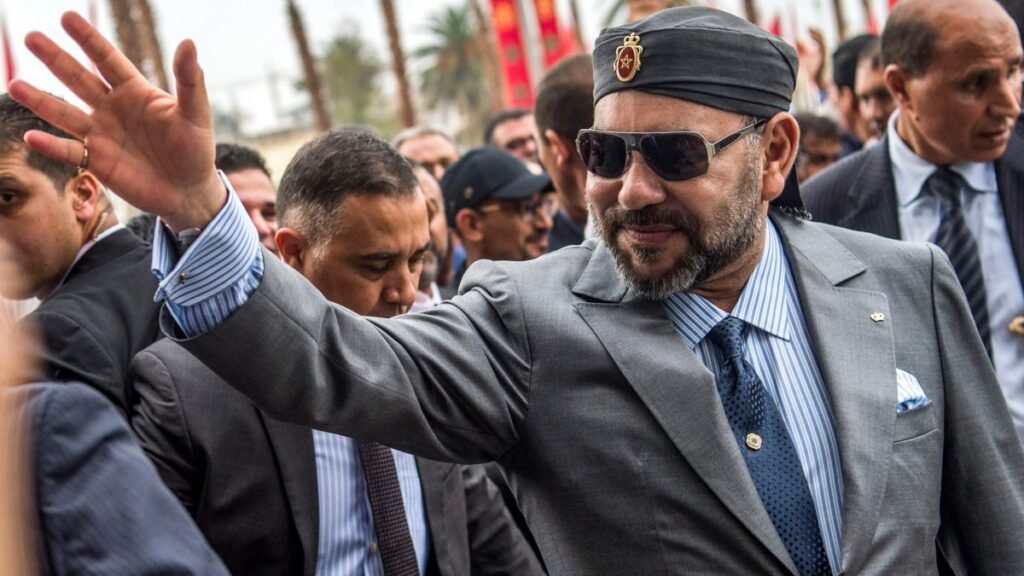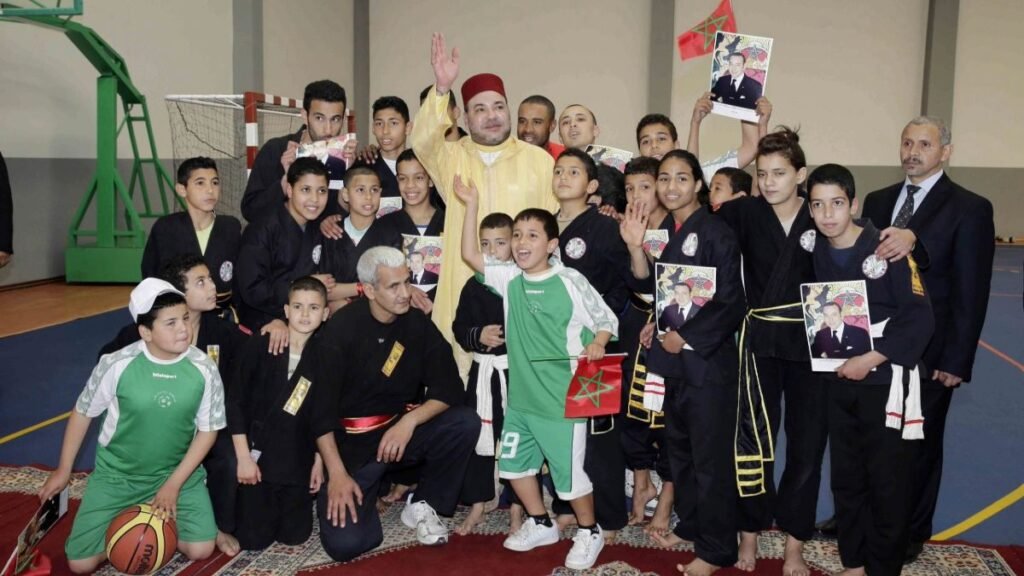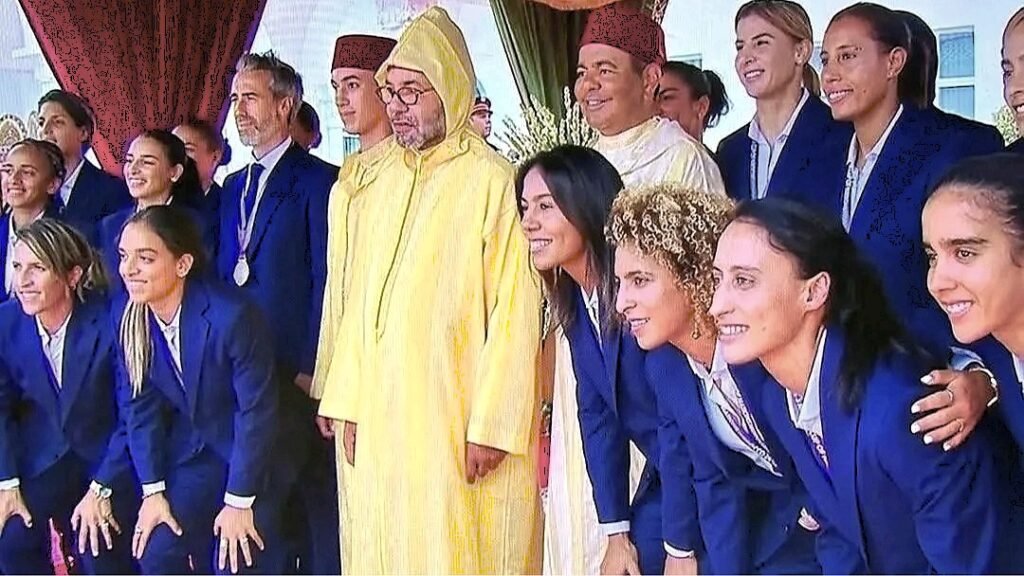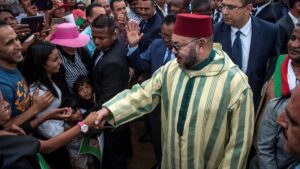Youth Day in Morocco: The State's Continuity Between National Symbolism and Political and Social Connotations

Youth Day in Morocco, celebrated annually on August 21st, which coincides with the birthday of His Majesty King Mohammed VI in 1963, is a prominent national event that holds a special place in the collective memory of Moroccans. It is not merely an annual celebration of King Mohammed VI's birthday; rather, it is a symbolic occasion carrying profound connotations related to political legitimacy, national belonging, and the reliance on youth as the future of the nation.
Since its adoption as a national holiday following Morocco's independence in 1956, it has been associated with... Youth Day With a central idea of renewing the covenant between the throne and the youth, emphasizing that the rising generations represent the nation's vital force and the cornerstone of its development and democratic project. The significance of this symbolic dimension increases when we consider current demographic data. Statistics show that Morocco is among the few countries where young people constitute the largest proportion of the total population, exceeding 60%. Based on this indicator, Morocco is classified among what are known as "young countries," meaning countries with a young demographic base and promising human potential, which reinforces optimism about their developmental future. In contrast, countries where the elderly outnumber the young are described as "geriatric countries," often facing challenges related to demographic aging and slow growth.
As this holiday coincides with other national occasions, such as Throne Day and the King and People's Revolution Day, it reflects the continuity of the national project, which combines the historical legitimacy of the monarchy with the future vision represented by the youth.
This article takes an analytical approach that seeks to study Youth Day in Morocco through its historical, political, social, and cultural dimensions, highlighting its symbolism in the Moroccan collective imagination and its role in shaping the relationship between the royal institution and society.
First: The historical background of Youth Day in Morocco
Youth Day first appeared during the reign of King Mohammed V in 1956, in the context of Morocco's independence from French and Spanish colonialism. It was necessary to create new rituals and symbols to accompany the construction of the modern nation-state. The late king chose to make his birthday Youth Day, reflecting a clear political will to connect the royal institution to the future of new generations.
During the reign of King Hassan II, Youth Day gained increasing importance, becoming a national tradition celebrated annually by the Moroccan people. It was not simply a commemoration of the king's birthday; it was also an official occasion to launch initiatives and programs targeting youth in the fields of education, sports, and culture. King Hassan II paid special attention to this holiday as a symbol of the renewed relationship between the throne and youth, to the point that some researchers described it as a "festival of continuity."
With the accession of King Mohammed VI to the throne in 1999, Youth Day has maintained its special status, becoming an occasion to reflect the new transformations Morocco is experiencing, particularly in terms of political and constitutional reforms and the growing emphasis placed on youth in development.
Second: The political dimension of Youth Day
Youth Day carries clear political connotations that can be read from multiple angles:
- Consolidating royal legitimacy:
Youth Day represents a renewal of the legitimacy of the monarchy as the guarantor of the country's unity and stability. Celebrating the King's birthday transcends protocol to reinforce the symbolism of the monarchy as a pivotal player in political life. In this context, the holiday represents an opportunity to strengthen the relationship between the King and the people, especially the youth, who are the future's bet and the cornerstone of development. The political dimension of the celebration also reflects the image of the King as the supreme arbiter above disputes and the guarantor of the state's continuity. Youth Day thus becomes an expression of renewed legitimacy based on the cohesion between the monarchy and society, and finds in youth a strategic element that links the past, the present, and the future.

- Betting on youth as the future of the nation:
Youth occupy a central position in Moroccan political discourse. King Mohammed VI consistently emphasizes that no development or reform project will succeed without the active involvement of this group, which constitutes the largest demographic bloc. From this perspective, Youth Day becomes a political occasion that transcends its celebratory dimension to renew the reminder of their place in public policy and the need to integrate them into education, employment, entrepreneurship, and political participation. The royal discourse views them as the backbone of society, representing the driving force behind progress and innovation in various fields. They are partners in shaping the nation's future, not merely beneficiaries of public programs. This approach also reflects the state's awareness of the importance of preparing rising generations to meet the challenges of globalization, economic transformation, and the digital revolution. This makes youth a creative force and a historic opportunity to accelerate development and consolidate Morocco's position regionally and internationally. Thus, Youth Day embodies a strategic challenge that links the nation's future to the state's ability to invest in its young energies.
- A holiday equivalent to the Feast of the Throne:
If Throne Day embodies the historical and symbolic dimension of the relationship between the king and the people, with its connotations of loyalty, allegiance, and the continuity of the state, then Youth Day adds a futuristic dimension to this symbolism. It not only recalls the past and its historical legitimacy, but also opens new horizons for the renewal of the state through rising generations. From this perspective, Youth Day is an extension of Throne Day, combining stability and renewal; the continuity represented by the throne and the aspiration for the future embodied by the youth. This parallel also provides a powerful political symbolism that affirms that the monarchy in Morocco is not merely an institution rooted in history, but also a future-oriented project based on the energies and creativity of young people. Thus, the two holidays together embody the unity of the national path: the past serving the present, and the present paving the way for the future.
- Framework for launching royal initiatives:
Youth Day provides a symbolic and practical framework for launching royal initiatives. The celebration often coincides with the announcement of new development and social projects directly targeting youth. These initiatives cover a wide range of areas, from enhancing education and vocational training, to developing sports and cultural infrastructure, and supporting entrepreneurship and employment. This timing holds special symbolism, as it links the festive nature of the holiday with practical measures that reflect the state's interest in the future of the country's youth. The focus on this segment also reflects the King's commitment to involving youth in the national development process and appreciating their potential as a lever for social and economic change. Through this approach, Youth Day becomes an occasion to renew the official commitment to rising generations, transforming political symbolism into a tangible impact on the lives of young people. The holiday thus becomes a strategic platform for launching initiatives that strengthen cohesion between the royal institution and society and affirm the position of youth as a primary driver of national development.

Third: The social and cultural dimension
In addition to its political symbolism, Youth Day carries important social and cultural dimensions:
- Identity and belonging:
Eid represents a moment to reinforce national identity and strengthen the bonds of belonging among new generations. It is an occasion to remind young people of their history and their connection to the royal institution, which has always represented a symbol of national unity. - Renewal and continuity:
Youth Day connects the continuity and renewal of the Moroccan state. The monarchy embodies stability, while youth represents change and renewal. - Promoting the values of participation:
The holiday also reflects the state's desire to integrate youth into public life by involving them in national discussions on development and democracy. - Cultural and sporting dimension:
Youth Day celebrations are often accompanied by cultural, artistic, and sporting activities, making it an opportunity to showcase the creative energies of Moroccan youth.
Fourth: Youth Day in the collective imagination of Moroccans
Youth Day is present in the collective memory of Moroccans as a national event that transcends its celebratory nature. In the collective imagination, this holiday is associated with the idea of a "renewed covenant" between the king and youth, which gives it a profound symbolic meaning.
It is also seen as an occasion for hope and optimism, as the nation's future is linked to the vitality of its youth. This explains the continued significance of the holiday despite the social and political transformations that Morocco has experienced in recent decades.
Fifth: Youth Day and current transformations
In the current context, Youth Day poses new challenges related to the state's ability to meet the aspirations of Moroccan youth, particularly in the areas of unemployment, education, and migration. The holiday is no longer merely a celebratory occasion; it has become a moment for critical reflection on public policies targeting youth and an opportunity to assess their responsiveness to modern economic and social transformations. King Mohammed VI's speeches have emphasized the need to integrate youth into national development, enhance their participation in elected institutions, and support their entrepreneurial initiatives. This is further compounded by another dimension related to technological and digital transformations. The King emphasizes the importance of equipping youth with digital skills and encouraging technological innovation and digital entrepreneurship, enabling them to benefit from the knowledge economy and open up to global opportunities. From this perspective, Youth Day has become a strategic tool not only for renewing the symbolic legitimacy of the monarchy, but also for guiding public policies toward effective investment in the energies of youth, enabling them to play a pivotal role in shaping Morocco's future in light of global digital and economic transformations.
conclusion
An analysis of Youth Day in Morocco shows that it is not merely a symbolic celebration of the king's birthday, but rather a national institution with profound political, social, and cultural significance. It links the continuity and renewal of the state, reflects the renewed relationship between the throne and youth, and provides an occasion to renew the debate on the role of youth in development and democracy.
The symbolism of Eid lies in its being a reminder of the importance of investing in young people, as they are the true guarantor of Morocco's future. While Eid was established in the context of building the modern nation-state, it today faces new challenges that require a comprehensive approach that restores consideration for youth in all public policies.
In this sense, Youth Day remains a national event that transcends its celebratory nature and serves as a catalyst for reflection on Morocco's future and the vital relationship between the monarchy and youth, as the essence of both continuity and renewal.





